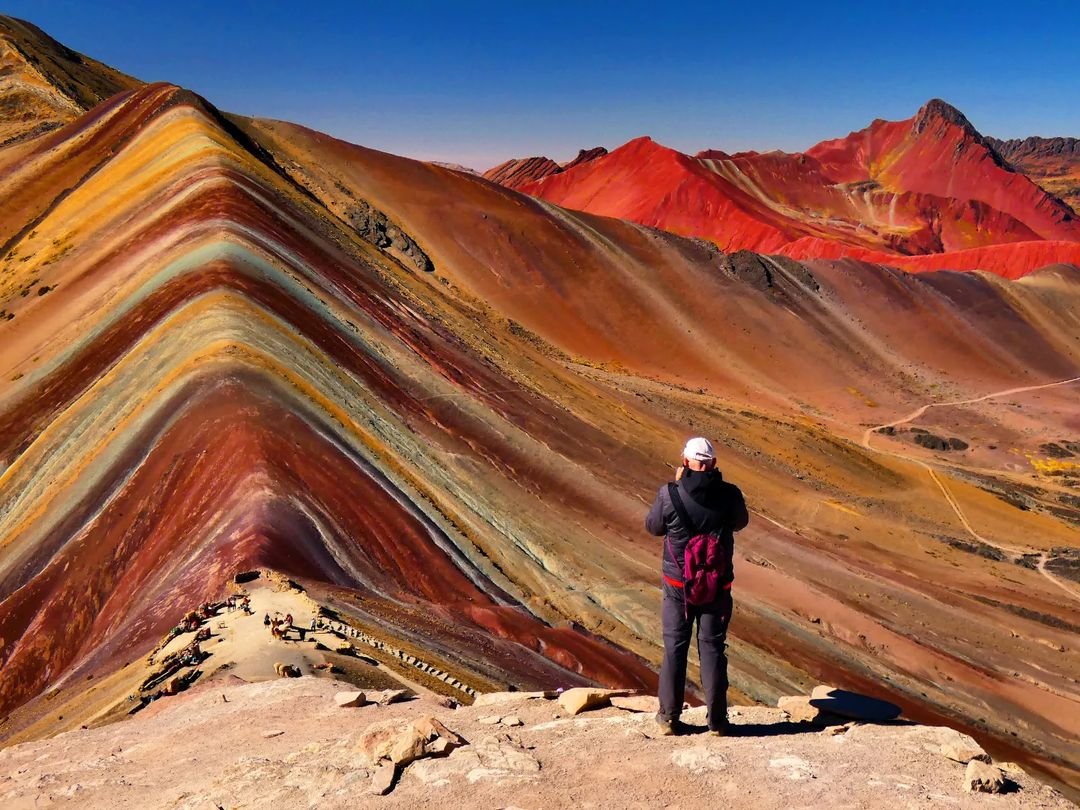
Petroglyphs of Cerro Mulato | Lambayeque
The petroglyphs of Cerro Mulato are located in the Lambayeque region, in northern Peru. Cerro Mulato is a hill located in the district of Pítipo, province of Ferreñafe, in the mentioned region. This area is known for its archaeological wealth, which includes not only petroglyphs, but also other vestiges of ancient civilizations such as the Lambayeque or Sican culture and the Moche culture.
History of the Petroglyphs of Cerro Mulato | Lambayeque
The petroglyphs of Cerro Mulato in Lambayeque, Peru, have a history dating back to pre-Columbian times. These stone engravings are evidence of the presence and activity of ancient civilizations in the region. Although the specific history of the Cerro Mulato petroglyphs may not be fully documented, it is believed that they were created by various cultures that inhabited the area between the 3rd and 16th centuries AD.
The petroglyphs show a variety of motifs, including human figures, animals, geometric and abstract symbols. These engravings probably had different purposes, ranging from artistic expression to the communication of religious, mythological or social ideas.
In terms of cultural significance, the Cerro Mulato petroglyphs provide invaluable information about the beliefs, practices and ways of life of the pre-Columbian civilizations that populated the Lambayeque region. Archaeological and anthropological studies continue to shed light on the history and meaning of these engravings, contributing to our understanding of the region’s past.
Today, the Cerro Mulato petroglyphs are an important cultural heritage site and attract visitors, researchers and tourists interested in exploring the rich history of the Lambayeque region and admiring pre-Columbian rock art. The preservation and protection of these petroglyphs are essential to ensure that future generations can continue to enjoy and learn from this invaluable legacy of the past.

What do we find in the petroglyphs of Cerro Mulato?
The petroglyphs of Cerro Mulato in Lambayeque, Peru, feature a variety of images and symbols that provide insight into the pre-Columbian cultures that created them. Some of the elements found in these petroglyphs include:
- Geometric figures: Circles, lines, squares, and other geometric shapes that may have symbolic or astronomical significance.
- Animals: Depictions of animals such as birds, snakes, felines, fish, among others, which may be related to local fauna or have symbolic and mythological meanings.
- Human figures: Human representations that may depict individuals engaged in everyday activities, rituals, or ceremonies.
- Religious and mythical symbols: Iconography reflecting religious, mythological, or cosmological beliefs of the cultures that inhabited the region.
- Natural elements: Representations of natural elements such as rivers, mountains, plants, among others, which may hold cultural or ritual importance.
These petroglyphs are significant for understanding the worldview and cultural practices of the ancient civilizations that lived in the Lambayeque region.
How to get to the Cerro Mulato petroglyphs?
To reach the petroglyphs of Cerro Mulato in Lambayeque, Peru, you can generally follow these steps:
- Travel to Lambayeque: The first step is to travel to the city of Lambayeque, which is the closest city to the petroglyphs. Lambayeque can be reached by bus from several major cities in Peru, such as Chiclayo, Trujillo, or Lima.
- Travel to Pomalca: From Lambayeque, you can take a bus or taxi to the district of Pomalca, which is near the petroglyphs of Cerro Mulato. This journey is usually short, approximately 15 to 20 minutes by car.
- Head to Cerro Mulato: Once in Pomalca, you can take a taxi or mototaxi to Cerro Mulato. Drivers may know the exact location of the petroglyphs and can take you directly to the site.
- Hike to the petroglyphs: Once at the base of Cerro Mulato, you may need to take a short hike to reach the petroglyphs. It’s advisable to wear comfortable footwear and bring water, as the terrain may be uneven.
It’s important to note that accessibility to the petroglyphs may vary, and you may need the assistance of a local guide to find the exact location. Additionally, it’s always recommended to check current conditions and visiting hours before planning your trip.

Recommendations to visit the petroglyphs of Cerro Mulato
To visit the petroglyphs of Cerro Mulato, here are some recommendations:
- Research before you go: Learn about the exact location of the petroglyphs, visiting hours, and any special requirements to access the site. You can search for information online or consult local authorities.
- Wear appropriate clothing and footwear: Since it may require a short hike or be on uneven terrain, it’s important to wear comfortable clothing and suitable walking shoes.
- Bring water and sunscreen: You’re likely to be exposed to the sun during your visit, so make sure to bring enough water and sun protection, such as a hat and sunscreen.
- Respect the environment: Petroglyphs are cultural and archaeological heritage, so it’s important to treat the site with respect. Do not touch or damage the engravings, and follow any guidelines or rules set by the authorities.
- Consider hiring a guide: A local guide can provide you with additional information about the petroglyphs, their history, and cultural significance. They can also help you find the way to the site and ensure a more enriching experience.
- Be environmentally conscious: Pick up your trash and avoid leaving traces of your visit. Help preserve the natural and archaeological environment for future generations.
- Be mindful of safety: Always keep safety in mind during your visit. If you’re planning a hike or visiting a remote area, consider bringing a mobile phone and let someone know about your plans and location.
By following these recommendations, you can enjoy a safe and respectful visit to the petroglyphs of Cerro Mulato in Lambayeque, Peru.











